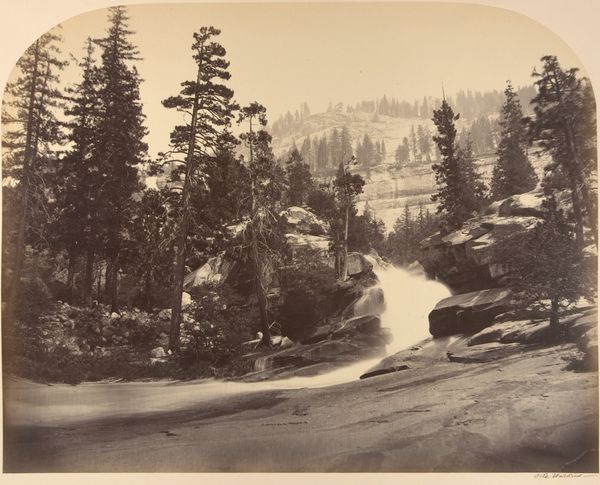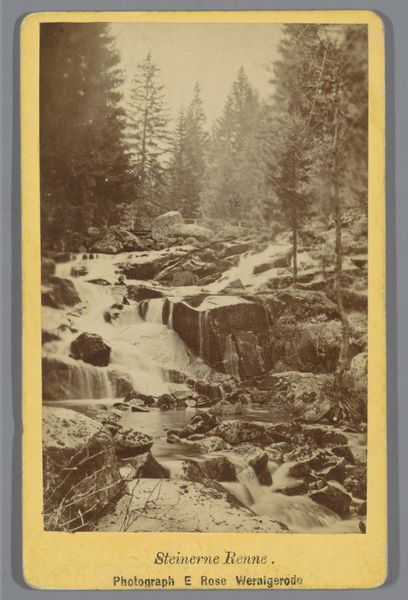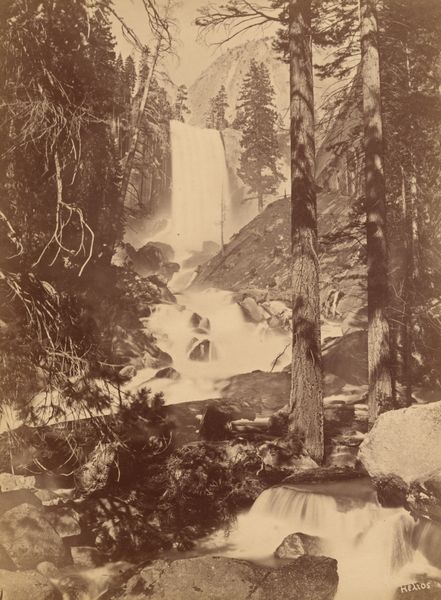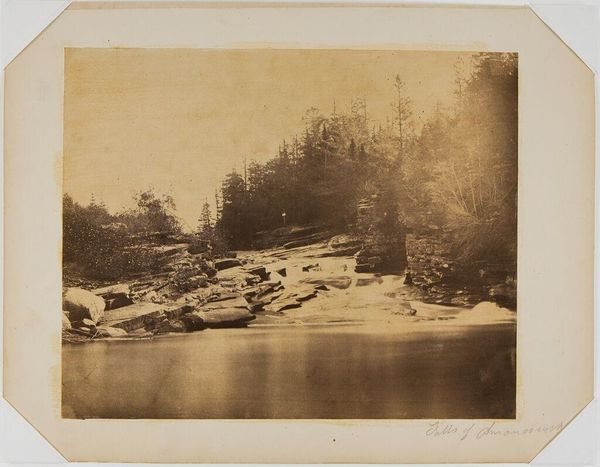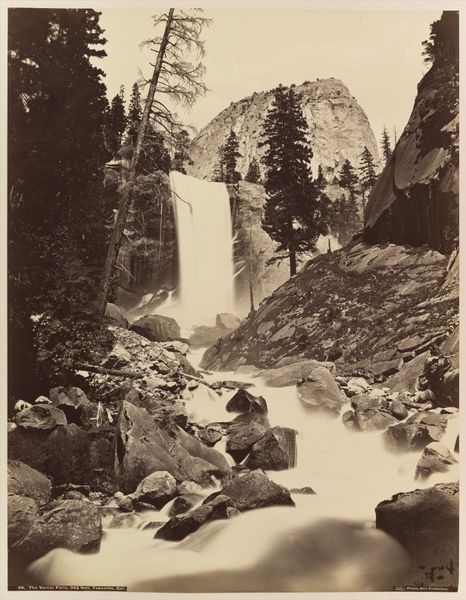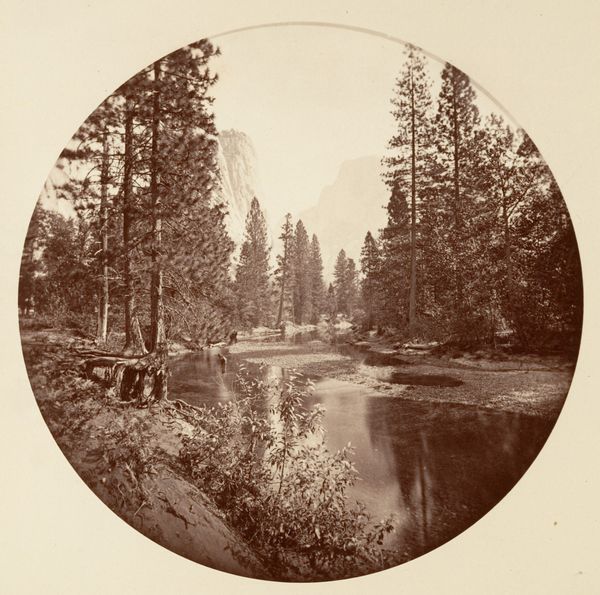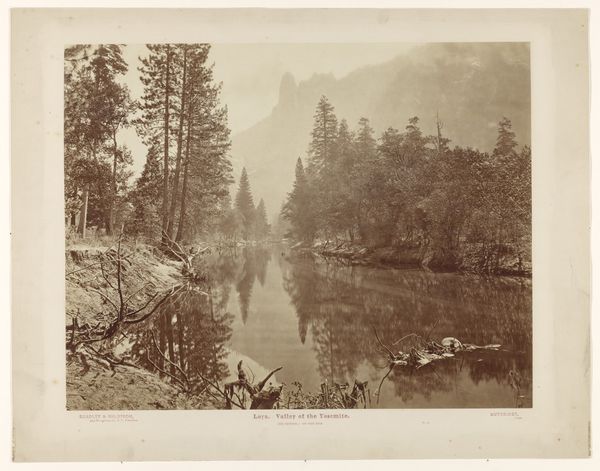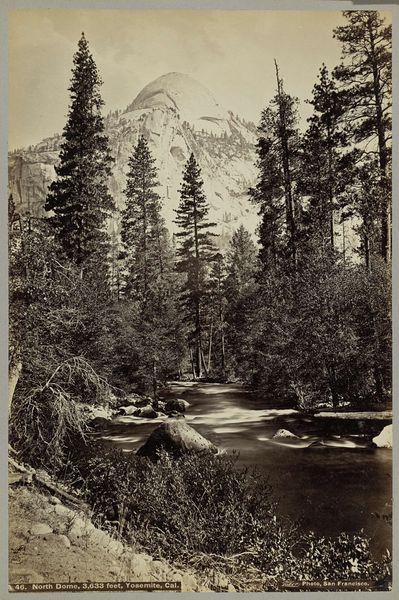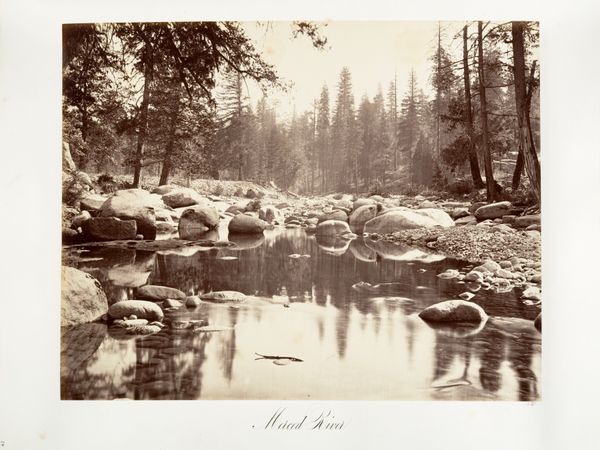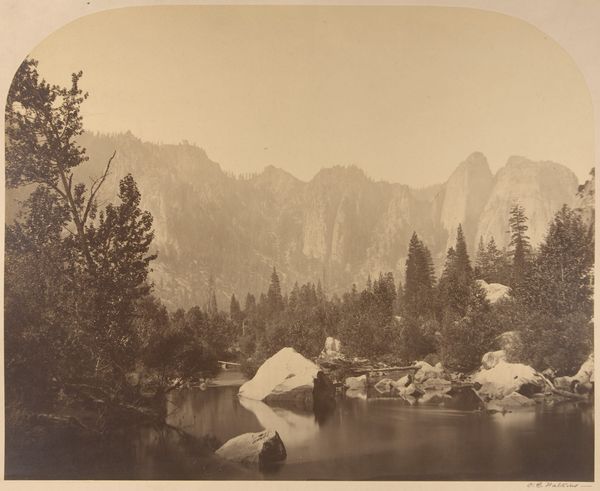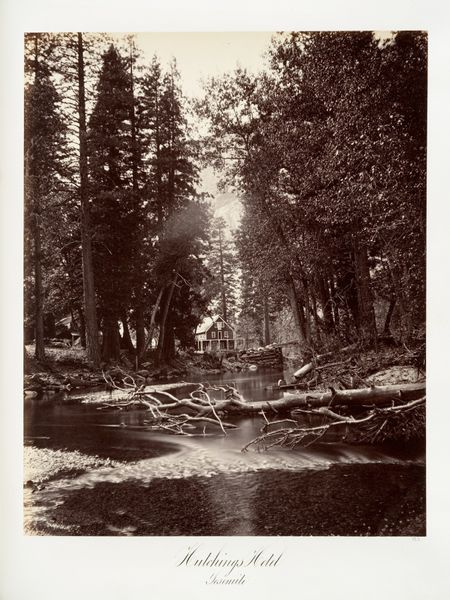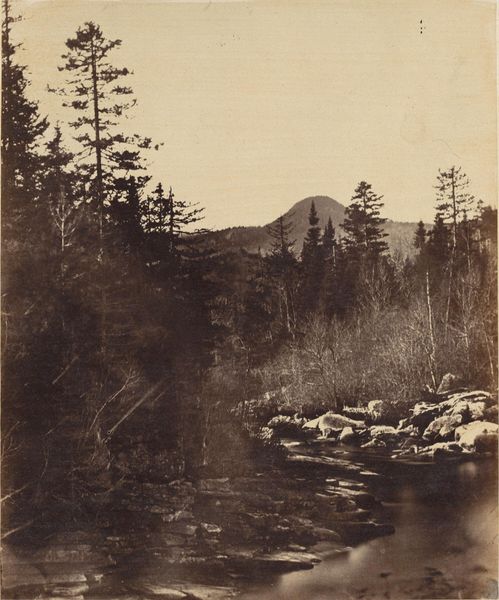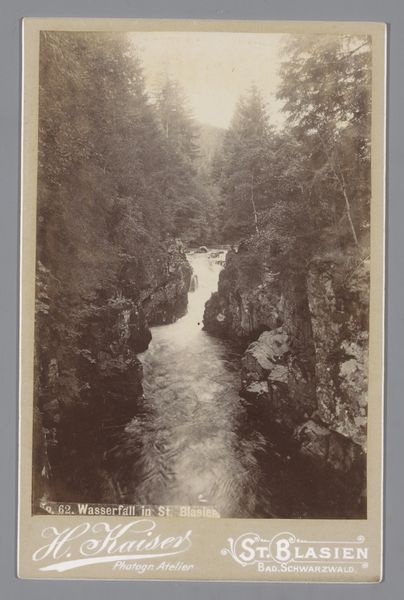
photography, gelatin-silver-print
#
landscape
#
waterfall
#
river
#
photography
#
gelatin-silver-print
#
hudson-river-school
#
water
#
watercolor
Dimensions: Image: 42.2 x 51; Mount: 53.6 x 67
Copyright: Public Domain
Curator: The majestic landscape captured here is Carleton Watkins’ “Nevada Fall, 700 Feet,” a gelatin-silver print from 1861. What is your initial response to it? Editor: It's… peaceful. There's a real sense of stillness, especially in the water, contrasting sharply with the implied power of the falls in the distance. It feels meticulously crafted, the long exposure turning water to silk. Curator: The composition is masterfully constructed, wouldn't you agree? Note how the trees act as vertical counterpoints, framing the cascading waterfall and guiding the eye. There’s an interplay between light and shadow. It’s almost transcendental, embodying the ideals of the Hudson River School, don't you think? Editor: Transcendental, yes, but let’s also think about the physical reality here. This is no easy feat – transporting the equipment, the glass plates, the chemicals… this wasn't a snapshot. We're talking about a considerable physical undertaking, and its production is crucial to interpreting this artwork. How were those materials sourced, transported, and used to produce this image of pristine wilderness? It represents the industrial and social impact, literally materializing this landscape. Curator: True, but consider how Watkins’ decision to print it in a particular way changes the work itself! Look at how he balances sharp detail with softer areas, particularly in the foliage. This strategic softening amplifies depth, pulling you further into the landscape itself. Editor: Again, it brings us back to how he manipulated the physical elements. Watkins chose silver gelatin; think of the significance of that particular material, and what other processes could he use to produce that artwork with different characteristics and artistic meanings? Also consider how this artwork will influence perceptions of nature at a critical point in American history, potentially encouraging extraction and labor. The sublime veils the utilitarian. Curator: I concede the inherent tension there. Ultimately, whether viewed as a feat of aesthetic engineering or an example of manipulated materiality, the work functions as a study of light, form, and perspective. Editor: Absolutely. It’s a potent document of a particular time, the history of both representation and industrial advancement frozen into a single image.
Comments
No comments
Be the first to comment and join the conversation on the ultimate creative platform.
